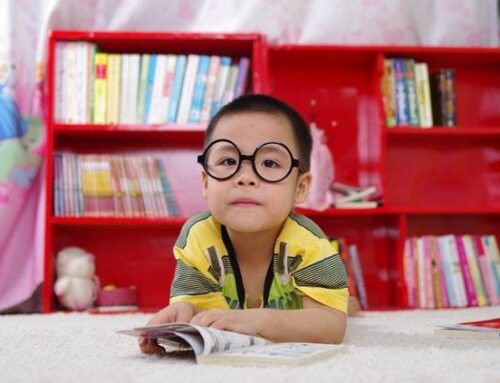Children and adults who suffer from the learning disability dyslexia may benefit from a treatment for auditory processing disorder (APD).
Why is that? Are dyslexia and auditory processing disorder linked?
Signs of Dyslexia
The International Dyslexia Association says a person with dyslexia “has trouble understanding words, sentences or paragraphs; both oral and written language are affected.”
Many assume dyslexia is a visual problem. However, a committee of the National Institutes of Health reports that dyslexic people have problems recognizing single words because of the way their brains process sounds.
Dyslexia causes problems not only with reading comprehension, spelling, writing, and math. A child with dyslexia may have trouble recognizing words that rhyme or learning new words. They may be unable to match letters with sounds. Dyslexia affects learning at every grade level.
Dyslexics have a hard time in school. Because they can’t read well, or can’t read at all, they get bored. The energy required to keep up means they’re always exhausted. They feel on the outside, unlike everyone else who has the same level of intelligence. These children may end up with anxiety and depression.
Indications of Auditory Processing Disorder
The brains of people with APD process sound differently than what is the norm. Natural language travels at 40 sounds per second. These sounds come too fast for someone with auditory processing disorder.
Because their brains can’t react to the sounds quickly enough, children with APD miss much of what is said. They are always trying to catch up. The effort to listen and understand tires and frustrates them.
Along with hearing, communicating using language requires attention and memory. Paying attention and remembering is hard if a child suffers from APD.
 While they have normal hearing and intelligence, children with APD may find it hard to process information and follow directions. Reading is hard for them because they don’t comprehend or spell well and have poor vocabularies. They often perform poorly in school and have problems behaving in spite of being intelligent in many other contexts.
While they have normal hearing and intelligence, children with APD may find it hard to process information and follow directions. Reading is hard for them because they don’t comprehend or spell well and have poor vocabularies. They often perform poorly in school and have problems behaving in spite of being intelligent in many other contexts.
APD leads to other problems for these children. They find it hard to make friends. Noisy classrooms may confuse them. They often feel disappointed or humiliated when they must reply to a question and don’t know the answer or fail to do something correctly because they can’t follow the instructions.
Using all your energy to take in information means you don’t have time to analyze it, so children with APD have trouble with math and logic.
The Connection between Dyslexia and Auditory Processing Disorder
Some researchers go so far as to theorize that APD causes dyslexia.
They suggest that dyslexics who have trouble distinguishing between letters, for example, “d” and “b,” cannot hear the sounds properly because their brains do not process rapid, brief sounds quickly enough. And because the sounds of spoken language are complicated and rapid, people who need more time to process them fall behind. This makes reading especially difficult.
The already difficult job of linking symbols like the letters of the alphabet with certain sounds is much harder for the dyslexic child, as their brain can’t process the sound. Since there’s no way to link sound and letter, a word with that sound is unreadable to them.
The apparent link between dyslexia and auditory processing disorder suggests that treatments for APD could possibly help children with dyslexia.
How Could the Tomatis Method Bring Relief?
The Tomatis method is named for its creator, Alfred Tomatis. He was a French doctor and inventor who developed a device that helped train and enhance the perception of specific frequencies some listeners miss to attend to, even though they can hear well..
The Tomatis Method uses bits of music or language to improve auditory processing. Clients listen to filtered and modulated music on special headsets. Listening to music that contains specific frequency bands, such as Mozart or a Gregorian chant, helps retrain the pathways that connect the receptors in the inner ear with the sound processing area in the brain called the primary auditory cortex.
The headsets also use vibration at the top of the skull to help the brain connect the sound and vibration of each frequency. Treatment programs involve multiple sessions over several months.
Retraining the brain to process sounds can also bring relief to dyslexics.
Being aware of sounds you couldn’t pay attention to before improves all language skills, including reading. Going from non-reader to reader changes a person’s life at any age, but is especially effective with children, who open up in many areas of their development.
Finding the Right Help
Both dyslexia and auditory processing disorder can be overcome. The connections between them suggest that listening training can improve both the ability to distinguish sounds and the speed of comprehension.
The Tomatis method helps clients keep track of conversations, follow instructions, and express themselves as well as improving their reading skill. By improving the processing of sound, it may well bring relief, not only for APD but for dyslexia as well.
Liliana Sacarin, PsyD, licensed psychologist, uses Dr. Tomatis’s Auditory Integration Technique to treat both children and adults for a variety of conditions. She is one of only eight experts in the United States trained by Dr. Tomatis himself.

